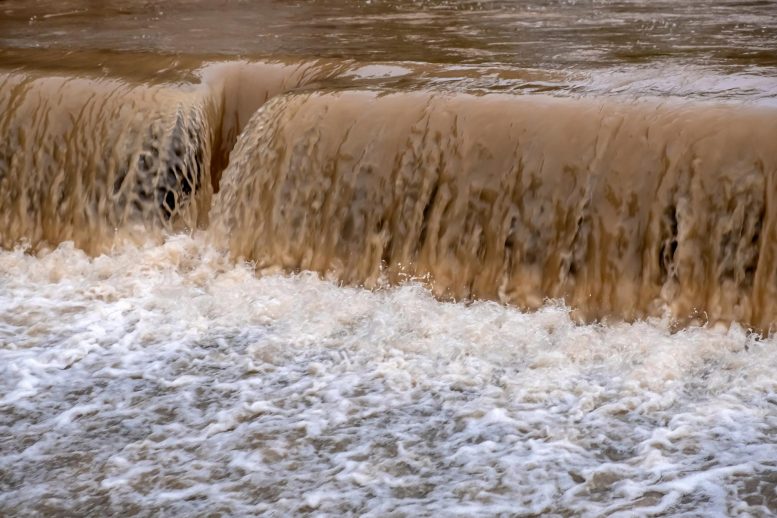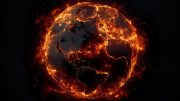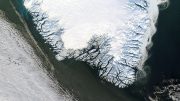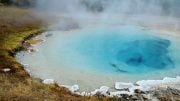
Climate change exacerbates water quality issues, especially during extreme weather events. Effective water management strategies require a comprehensive understanding of the interplay between climate, land use, and human activity, with an increased focus on regions like Africa and Asia.
Climate change and increases in drought and rainstorms pose serious challenges to our water management. Not only the availability of water is under pressure, but also its quality. However, according to the most recent IPCC report our current understanding of this issue is inadequate.
To fill this gap, an international group of scientists has brought together a large body of research on water quality in rivers worldwide. The study published today (September 12) in Nature Reviews Earth & Environment shows that river water quality tends to deteriorate during extreme weather events. As these events become more frequent and severe due to climate change, ecosystem health and human access to safe water may be increasingly under threat.
Detailed Research Insights
The research led by Dr. Michelle van Vliet of Utrecht University analyzed 965 cases of river water quality changes during extreme weather such as drought, heatwaves, rainstorms, and flooding, as well as under long-term (multidecadal) changes in climate. “We looked at various water quality constituents such as water temperature, dissolved oxygen, salinity, and concentration of nutrients, metals, microorganisms, pharmaceuticals, and plastics,” says van Vliet.
The analysis shows that in most cases water quality tends to deteriorate during droughts and heatwaves (68%), rainstorms and floods (51%), and under long-term changes in climate (56%). During droughts, less water is available to dilute contaminants, while rainstorms and floods generally result in more contaminants that run off from land to rivers and streams. Improvements or mixed responses in water quality are also reported for some cases owing to counteracting mechanisms, for example when increased transport of pollutants is offset by more dilution during flood events.
Human Influence and Regional Disparities
Water quality changes are strongly driven by changes in river discharge and water temperature. Land use and other human factors such as wastewater treatment also shape how this plays out. “Understanding the complex interplay between climate, land use, and human drivers, which together influence the sources and transport of pollutants is crucial,” says van Vliet. The research also calls for more data collection and studies of water quality in non-Western countries. “We need better monitoring of water quality in Africa and Asia. Most water quality studies now focus on rivers and streams in North America and Europe.”
The results of the study underline the urgent need for a better understanding of water quality changes during extreme weather events, and the mechanisms underlying this. “Only then will we be able to develop effective water management strategies that can safeguard our access to clean water and ensure ecosystem health under climate change and increasing weather extremes.”
Reference: “Global river water quality under climate change and hydroclimatic extremes” by Michelle T. H. van Vliet, Josefin Thorslund, Maryna Strokal, Nynke Hofstra, Martina Flörke, Heloisa Ehalt Macedo, Albert Nkwasa, Ting Tang, Sujay S. Kaushal, Rohini Kumar, Ann van Griensven, Lex Bouwman and Luke M. Mosley, 12 September 2023, Nature Reviews Earth & Environment.
DOI: 10.1038/s43017-023-00472-3









Heatwaves and droughts and floods are not climate. If one of those lasts thirty years, then yes, except it’s no longer those things but a new climate instead. The algae increases are not climate change, but demonstrably fertilizer run-off. The conclusions about water quality deterioration are obvious; when there’s less rain there’s less water and more concentrated pollutants, and when there’s abundant rain there’s more washed into the river, but you’ll never be able to force there to be exactly the same amount of rain every year. If you want to help this problem, climate change isn’t your concern, but improving water treatment is. Learn about your local water treatment system, and maybe provide support for additional investment into it.
Note, the full study is paywalled.
“As these events become more frequent and severe due to climate change, …”
This prediction has weak support. The Great Flood of California (1862) hasn’t been superseded by anything as large. The Great Mississippi Flood of 1927 still holds the records for death and destruction. One can find similar floods for China in the past, where millions perished. Death Valley still holds the worlds record temperature of 134 Deg. F in 1913. The US hasn’t had heat waves to match what happened in the 1930s. If one is going to make claims, then all the historical records should be examined, not just the last few decades when CO2 has started to rise.